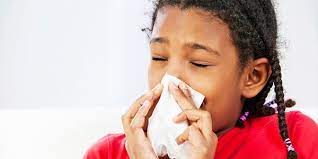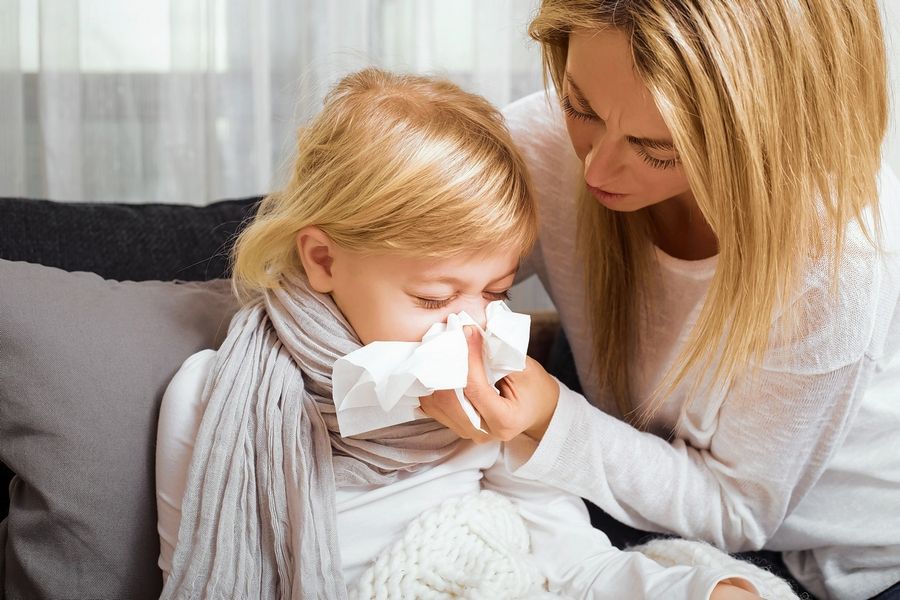Children’s respiratory disease in winter ( symptoms and treatment )

Children may suffer from cold, fever in winter. Mainly due to cold weather, children suffer from such problems in winter. Outbreaks of viral sore throat and viral dysentery-diarrhea are common in winter.
child’s cold or ‘common cold’
The common cold or ‘common cold’ is a common childhood illness, especially in children with weakened immune systems. A child may suffer from six to 10 colds in a year. Viruses are mainly responsible for this. Eg – Rhinovirus, Pera Influenza, Respiratory Syncytial Virus.
Symptoms appear two to three days after the pathogen enters the child’s body. For example, persistent runny nose, shortness of breath, swelling of nasal membranes, sneezing, sore throat, cough and headache.
Infants and young children can have fevers of up to 1020 degrees Fahrenheit. The common cold can cause other bacterial infections; Such as ear infections, sinusitis, swollen glands, sinus pain and high fever. Paracetamol and antibiotics may be needed to reduce these.

Influenza (flu)
Children with asthma, congenital heart defects or weakened immune systems can become seriously ill from the flu. Severe cough and vomiting occur. The new antiviral drug, the flu vaccine, is very effective.
Respiratory syncytial virus (RSV)
Sore throat, nasal congestion are the symptoms of this disease. Children also present with symptoms of cough, wheezing.
Streptococcal pharyngitis
Sore throat is its main symptom. However, to determine whether this sore throat is bacterial or viral, a throat swab should be tested. Only 15 to 25 percent of sore throat symptoms are caused by bacteria. Most viral causes do not require antibiotics. But bacterial strep throat must be treated with antibiotics. Because it protects the child from complications like rheumatic fever.
Pneumonia in children
Pneumonia: If the baby has a ‘rapid breathing rate’ or the lower part of the baby’s chest can be turned in while breastfeeding or sleeping peacefully, then the baby should be diagnosed with pneumonia. A baby is said to have a ‘fast breathing rate’ if
♦ 60 or more beats per minute under two months of age.
♦ 50 or more at the age of two months to one year.
♦ 40 or more per minute between one and five years of age.
Severe pneumonia
♦ Child not feeding well, unable to breastfeed.
♦ How dull the child is.
♦ Tongue, lips bluish.
♦ Severe dyspnea (head swaying).
♦ Difficult breath sounds are heard.
Treatment
A child with severe pneumonia should be sent to hospital urgently. If necessary, intravenous antibiotics, oxygen, intravenous saline and monitoring should be done.
Bronchiolitis
The prevalence of the disease is high in children under two years of age, especially between the ages of three and six months. Lungs have narrow airways. Bronchiolitis is an inflammation of the tiny air-transporting ducts that spread like a network in the lungs. It usually occurs during winter due to viral infection. Germs can quickly spread to other children through the sneezes and coughs of sick people or through used tissues, toys, etc.
Symptoms
♦ Initial symptoms are – stuffy nose, runny nose, slight cough and fever. These symptoms last one to two days. Later the cough increases, wheezing is heard. Dyspnea manifests itself in varying degrees—rapid breathing, high heart rate, muscle spasms in the neck and lower chest with breathing, and fluctuating nostrils.
♦ Child becomes very restless, irritable, lethargic. Inability to sleep and breastfeed. Bluish color of lips and nails, vomiting, dehydration problems may occur.
Treatment
♦ Most bronchiolitis is mild and does not require special treatment. Give more fluids, small amounts frequently. Adoption of fresh air circulation in the house. Using normal saline drops and bulb syringes, keep the nose clean before eating and sleeping. Paracetamol may be given for fever.
♦ If there are symptoms of shortness of breath and dehydration, hospital admission is required.
Asthma in children
Asthma is one of the chronic diseases seen in children. One in four to six children up to the age of four will suffer from a respiratory illness at least once. Even many children with asthma have spent years on drugs and antibiotics as bronchitis patients, to no avail. Most cases of asthma in children improve with age, and in a very small number of children, the disease clears completely by a certain age. Many cases recur at a later age. There are two types of asthma in children.
Atopic or Eccentric: This is most common. With preventive management there is a possibility of complete recovery from it. In this type, there is a history of asthma on the child’s parents or on the parents’ side of the family. The incidence of atopic asthma is higher during summer. Dust, dog, cat and animal hair, pollen, smoke, some allergic foods, refrigerated foods, some medicines; E.g. Aspirin, beta blockers can trigger asthma.
Intrinsic asthma
It is usually more in winter. There is no hereditary metal. This is especially true for older children.
How to diagnose the disease
♦ Chest cold persists for many days. Breathing sounds are heard. Nocturnal cough. Shortness of breath or persistent coughing or wheezing after running, exercising, or playing sports.
♦ Examines the child.
Management
♦ Results are very good in treating asthma in children. About 90 to 95 percent of children recover completely if proper treatment is started on time. Others may suffer from chronic asthma for the rest of their lives.
♦ Finding the source of the child’s recurrent severe asthma attacks and avoiding them as much as possible.
General care for respiratory diseases in children
♦ Eat normal meals and drink plenty of fluids.
♦ Drinking tulsi leaf juice, safe honey, lemon water will relieve cough.
♦ Rest, salt-water gargling.
♦ Paracetamol to relieve fever and headache. Never use aspirin-like drugs.
♦ Area of use of antibiotics is very limited. They are not capable of suppressing viruses.
♦ Antihistamines are sometimes used to relieve symptoms of frequent runny nose, red eyes.
♦ Nasal Congestion Relief Nasal drops and cough syrups available in the market do not play any role, rather they are harmful.
♦ Encouraging children about hand washing.
♦ Frequent breathing, labored breathing, difficulty eating, child seems very sick, oxygen saturation level drops below 92 percent—contact a health center immediately if these symptoms occur.
Tags: treatment for common cold in child, common cold pediatric guidelines, how to treat a cold in a 2 year old, best syrup for cold and cough for child, if a child has a cold should they stay inside, toddler cold remedies, child cold or covid, how to get rid of a child’s cold quickly, Respiratory syncytial virus, pediatric respiratory diseases list, pediatric respiratory disease: diagnosis and treatment, pediatric respiratory diseases pdf, childhood respiratory diseases characterized by a barking cough, common respiratory diseases, common respiratory diseases in pediatrics, respiratory disorders in pediatrics ppt

